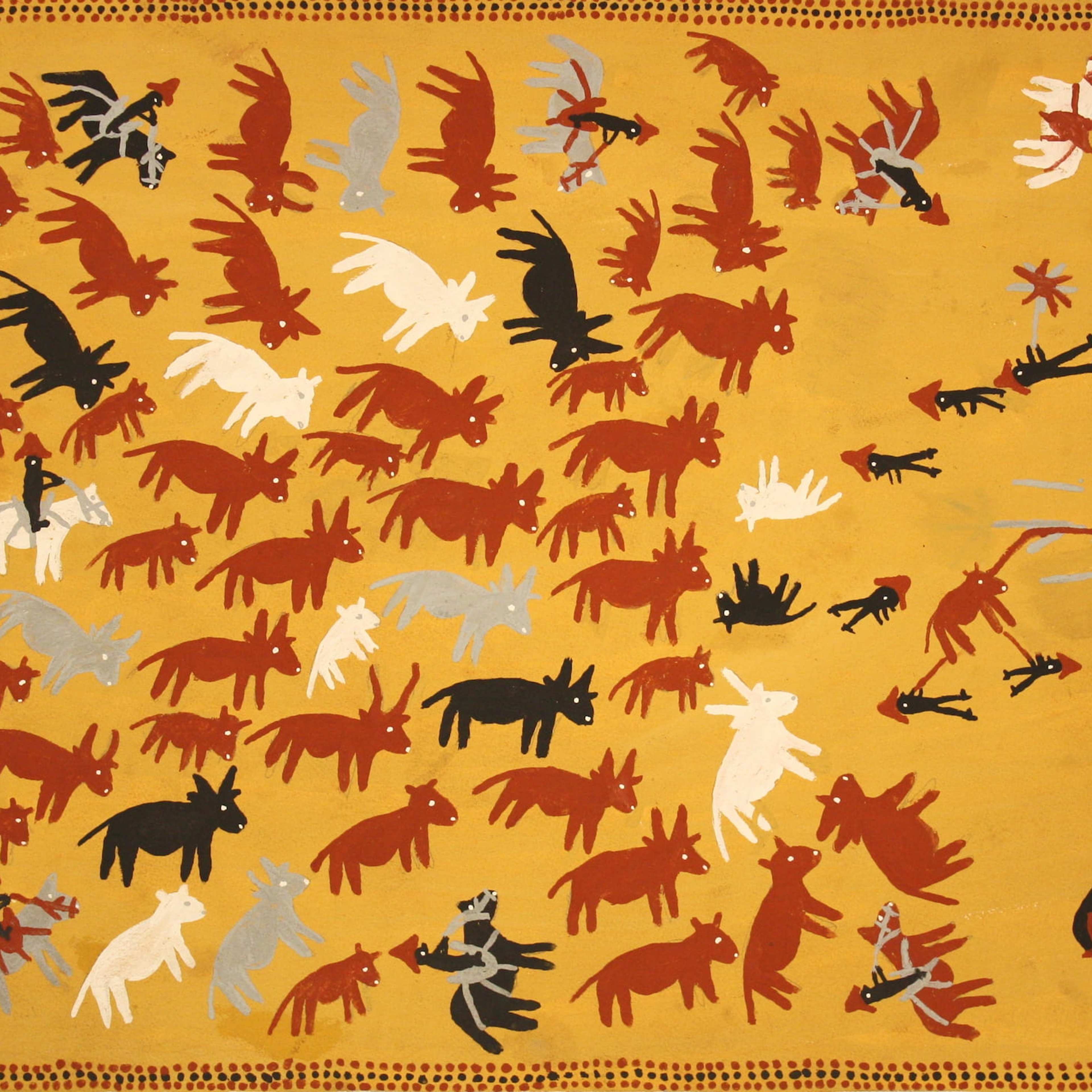
In the Saddle – On the Wall
When
This exhibition has now ended.
Location
In the Saddle – On the Wall was a unique art and digital media exhibition that shared insights into the history, art and culture of northern Australia’s Kimberley region. The exhibition celebrated the resilience and determination of Aboriginal people to maintain connection to their cultural values and country.
The remote Kimberley region of northern Western Australia has been shaped by a thriving pastoral industry built on the contribution, knowledge and commitment of generations of Aboriginal people. However, what could have continued as a complex yet prosperous crosscultural industry abruptly ended with the introduction of the pastoral industries legislation in the late 1960s.
When Aboriginal people were moved off stations as a result of this legislation, some Aboriginal people continued their cultural connection through arts practice. Through art and storytelling, they have maintained their cultural knowledge for younger generations.
This exhibition shared the stories of life on Kimberley cattle stations through the voices of the Aboriginal people who worked on them. The digital stories presented within it chronicled a period in Australian history when the Aboriginal people who had contributed to the growth of an industry for almost one hundred years were forced from their land and could only maintain their cultural life through memory, storytelling and art. When the white cattlemen first moved through the East Kimberley in the late 1800s, Aboriginal people were seen as a threat to pastoralists, their families, their stock and financial security. In response, the Aboriginal populations were hunted down, forced to work, imprisoned, enslaved and massacred. Following this period that Aboriginal people refer to as the ‘killing times’, an era of uneasy collaboration with the colonisers began. Aboriginal people suffered a terrible toll, and in the end, ceasing warfare was essential not only to their survival but also to maintaining access to their traditional lands. ‘Station life’ became a way of life for Aboriginal people and the colonial pastoralists settled into the realisation that the contribution of Aboriginal people was essential to the survival of the Kimberley cattle industry. For Kimberley Aboriginal people, memories of station life are coloured by the hardships and adventures of station work. For many Aboriginal people, station life is remembered as the ‘good days’ when families were together and men and women were working people.
Unfortunately the ‘good days’ came to an abrupt end. With the pastoral industries’ legislation for wages reform, equal wages turned out to be a hollow victory. Families and whole communities were forced off properties where they had worked for generations. In the Saddle – On the Wall showcased this important aspect of Australia’s history and the experiences of cultural resilience of Aboriginal people of the Kimberley region.
Exhibiting artists: Manmara Daisy Andrews, Gordon Barunga, Mr. Brumby, Alan Griffiths, Peggy Griffiths Mabel Juli, Minnie Lumai, Patrick Mung Mung, Mr. Newry, Shirley Purdie, Rammey Ramsey, Mervyn Street and Freddie Timms.
- Banner Image:
Alan Griffiths, Cattle Muster, 2014, ochre on paper, 56 x 76 cm. Courtesy the artist and Waringarri Aboriginal Arts.
